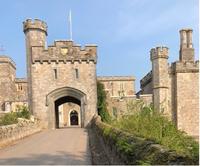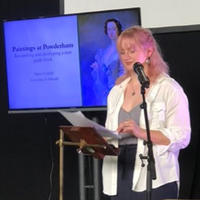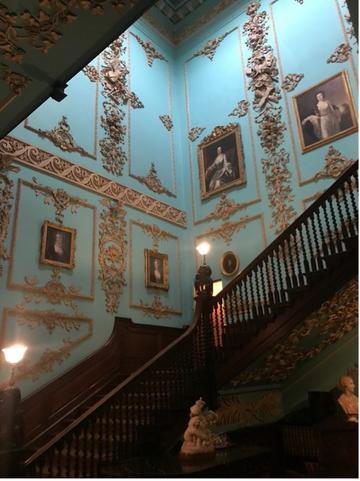Portraits and Paintings at Powderham
A Summer Internship with Powderham Castle in Devon
The Heritage Partnerships Team and the Oxford University Heritage Network (OUHN) are very pleased to have set up this summer internship with Powderham Castle in close collaboration with the Oxford University Careers Service.
In the summer of 2020 I was lucky enough to work on a research and development project on the fascinating art collection at Powderham Castle in Devon. The pandemic had necessitated the closure of heritage properties, and meant that internships had to be undertaken remotely. While I was looking for summer internships the opportunity at Powderham really caught my eye – having grown up in Devon and spending lockdown in my family home 40 minutes from Powderham – it seemed like the perfect arrangement to work on a project for a property I had visited many times before, and could easily travel to in order to view the paintings and meet the team when restrictions opened up.
I was delighted to be chosen for the internship, and even more so when I found out that a close friend from college, Jessie, had also been selected, so we would be working on the project together. The first few meetings with our supervisor, Derry Tydeman (Heritage Manager at Powderham) were over zoom, where we discussed the goals and aims of the project, and what preliminary steps we were going to take. Powderham gave us a lot of freedom with the project: while they wanted a new resource for offering the public information on the art collection, we had options about what form that could take. We decided to work on producing a guidebook, with the potential to develop into an audio-guide at a later stage.
These early meetings offered a lot of insight into the hoops that heritage institutions have to jump through on projects like this, for example providing Project Initiation Documents, outlining the goals of the project, possible funding streams, and projected outcomes. After learning about the admin and paperwork that goes hand in hand with projects like this, we started researching the paintings and deciding which to include in what was initially titled ’50 Portraits and Paintings at Powderham’. We ended up focusing on more than 50 paintings, and renamed the project ‘Portraits and Paintings at Powderham’. We were spoilt for choice with the collection: private art collections are usually fascinating, because they reveal things not only about the artworks and artists, but also the collector and families that commission these artworks over generations. Unlike paintings in galleries, these artworks are lived around everyday, not only depicting but also playing their part in the lives of the families who inhabit these properties.
Jessie and I split the collection fifty-fifty for our research: the paintings ranged from the Tudor period to today, and featured influential artists such as Joshua Reynolds, Thomas Hudson and Richard Cosway. When approaching the artists we anchored our research in the connection to Powderham. We asked questions such as: why were they chosen for the work? What did they go on to do, or had done prior? What part did Powderham’s patronage play in their career? What was their personal or working relationship with the Courtenay family? Jessie and I also wanted to put our own spin on the project, which was to focus on the female artists whose work can be seen at Powderham. This included Mary Beale, who is thought to be the first woman to own and manage her own studio, and whose ‘Portrait of a Lady’ is kept at Powderham. Another was Eleanor Coade, the pioneering inventor of Coadestone, whose sculptures graced most well-to-do country houses in the 18th century, including Powderham.
The project ended up taking much longer than the intended four weeks: we were liaising with the team at Powderham and writing the guide book over three months from June-August. It was so rewarding to think that our research and writing was working towards a physical resource, that would help people understand and enjoy looking at the paintings when they visit Powderham in the future. That summer Powderham was, for the first time in 60 years, re-developing its entire visitor experience of the castle and its collections. Our project formed an important part of these wider efforts to encourage visitors to engage with the heritage of the castle in ways that haven’t been offered before.

Powderham Castle. Photo by the author.
I did manage to visit Powderham in person when restrictions started opening up at the end of July: this was really helpful to have a closer look at the paintings that we were, at that point, writing about. It also helped us get a general idea about how the paintings were situated in the castle, which informed how we laid them out in the guidebook. I returned to Powderham in September to deliver a talk at their Heritage Open Week, and presented our project to the public. Even though we only had around 15 attendees in person, the talk was live-streamed to Powderham’s Facebook page and initially reached over 800 people. I discussed how the summer internship scheme had led us to the project at Powderham; described our working process for researching and writing the guidebook; explored the narratives behind the artists and paintings, and the value of the Courtenay family’s patronage of artists over time.

Maisie delivering a talk at Powderham’s Heritage Open Week.
The experience as a whole has allowed me to develop a really rewarding and, I hope, long-term connection with the team at Powderham, who were there every step of the way to provide information, documents and support to our project. There were plans for a formal dinner at the castle for all the interns from different projects and universities who were working with Powderham that summer (which unfortunately didn’t go ahead due to the November lockdown). But we were invited back to a staff Christmas lights event, which really made me feel like part of the team, albeit for a short-term project. The internship has given me experience that has been exceedingly valuable in pursuing future opportunities in heritage. It has been a delight to work with the team at Powderham and I am grateful to both Powderham and the Oxford Heritage Network for setting up this project and connection.
Maisie Corkhill is a finalist reading English Language and Literature at Christ Church. After graduating, she intends to pursue opportunities in the arts and heritage sector.

The interior hallway of Powderham Castle. Photo by the author.


